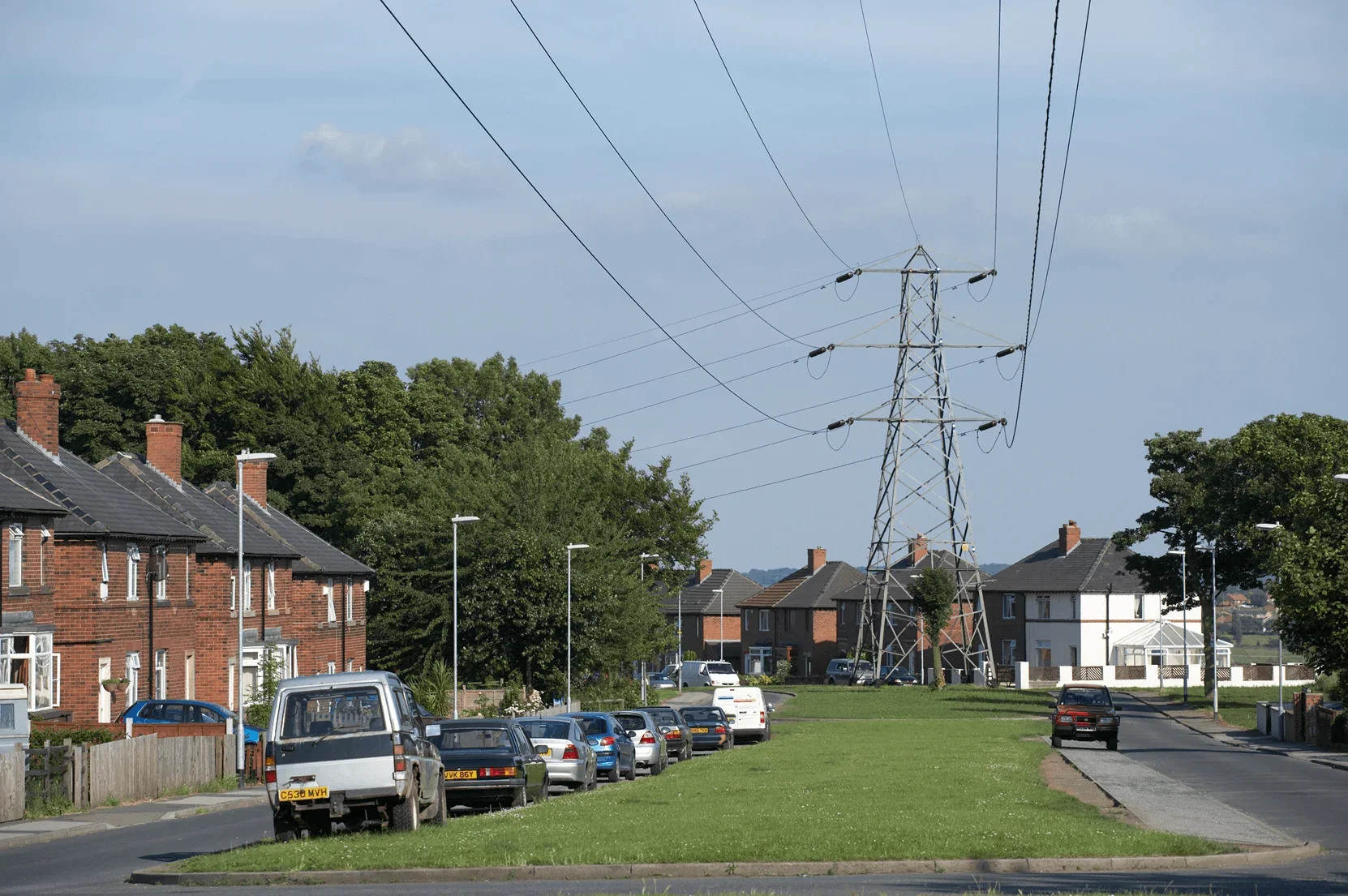BUSINESS ENERGY
A business guide to time-of-use energy tariffs
Read time: 5 minutes
By Les Roberts, Business Energy Expert
10th June, 2025
Time-of-use tariffs are a smart way to cut your business electricity bills if you operate during off-peak times. Whether you're running a bakery that fires up ovens before sunrise or a kebab shop open until the early hours, choosing the right energy tariff could mean serious savings. But it all depends on how and when you use electricity.
This guide explains how time-of-use tariffs work, what types are available, which businesses benefit most, and what kind of meter you’ll need to make it all happen.

What are time-of-use tariffs?
Time-of-use tariffs charge different electricity rates based on the time of day energy is used. During off-peak hours (usually at night or in the early morning), electricity is often cheaper because there's less demand on the grid. In contrast, peak periods like weekday evenings tend to cost more.
These tariffs encourage businesses to reduce pressure on the National Grid and make use of surplus electricity when demand is low. They're especially helpful if your business can shift energy-intensive tasks to quieter periods.
Unlike standard flat-rate tariffs, which charge the same rate no matter when electricity is used, time-of-use deals reward flexibility. You get lower prices during off-peak times, but may face higher rates during busy periods unless you manage your usage carefully.
What are Economy 7 and Economy 10 tariffs?
Economy 7 is one of the most well-known time-of-use tariffs. It offers seven hours of cheaper electricity each night, typically between 11 pm and 6 am, or between midnight and 7 am. Though this can vary depending on your location, supplier, and whether daylight saving time applies.
These tariffs were originally designed for homes with night storage heaters, but can work well for businesses that operate through the night or rely on night-time processes, like bakeries, laundrettes or small manufacturing units.
Economy 10 takes it a step further by offering ten hours of off-peak electricity spread across the day. This is usually a mix of night-time, afternoon, and evening slots. Economy 10 can be handy for businesses that use heating systems or have split-shift operations.
However, both tariffs come with higher daytime rates, so they only make financial sense if you can shift the bulk of your usage into the discounted time windows.
Are more advanced multi-rate tariffs available?
Beyond the traditional Economy 7 and 10 structures, some suppliers offer multi-rate or dynamic pricing tariffs tailored to your usage patterns.
A typical multi-rate tariff might break the day into three periods:
- Off-peak (e.g. 11 pm to 6 am) – the cheapest rate
- Mid-rate (e.g. 6 am to 4 pm and 7 pm to 11 pm) – a moderately priced window
- Peak (e.g. 4 pm to 7 pm) – the most expensive period
These are often powered by smart meters and advanced analytics, giving you more control over costs and helping you align energy use with cheaper time slots.
Some suppliers even offer bespoke tariffs that reflect real-time market conditions. While these can be trickier to manage, they offer maximum savings potential for businesses with flexible operations.
Do time-of-use tariffs suit every business?
Not necessarily. Time-of-use tariffs work best for businesses that can either operate outside peak hours or shift most energy use to off-peak times.
For example:
- Manufacturers running overnight shifts or heating processes
- Laundrettes or dry cleaners open late or early
- Bakeries preparing goods before morning deliveries
- IT or server-based businesses running 24/7
- Electric vehicle fleets charging overnight
If your business mostly operates during regular working hours (9 am to 5 pm), a time-of-use tariff might not make a significant dent in your business energy bills, and could even cost more due to higher daytime rates. That’s why it’s essential to understand your energy consumption profile before switching.
How to understand your energy usage
Before you make any switch, analyse when your business uses the most energy. Smart meters or half-hourly meters can help with this by breaking your consumption down into 30-minute chunks.
Here's what you need to consider:
- What times of day do you use the most energy?
- Can processes be moved to different times?
- Are there energy spikes that could be controlled?
A simple energy audit, either in-house or through your supplier, can reveal patterns and highlight where savings could be made.
What are the meter requirements for time-of-use tariffs?
To take advantage of time-of-use pricing, your business needs a compatible energy meter. Here are the main types:
Economy 7/10 meters
These traditional meters are designed for dual-rate tariffs like Economy 7 or 10. They record usage during two or more specific time bands and send different readings for peak and off-peak periods. They're suitable for simpler time-of-use deals but limited in flexibility.
Smart meters
Smart meters are the most versatile option. They record energy usage in real time and automatically send readings to your supplier. This allows for flexible tariffs and easier energy monitoring. Smart meters are essential for more advanced ToU tariffs with multiple price bands or dynamic pricing.
Half-hourly meters
These are typically used by larger businesses and record energy usage every 30 minutes. Data is sent directly to suppliers for accurate billing. While they require a dedicated data communication service, they offer the best insights for managing energy use in line with price fluctuations.
How to get a compatible meter installed
If your current meter doesn’t support time-of-use tariffs, you’ll need to upgrade. Here’s how the business energy meter installation process usually works:
1. Check with your supplier
Start by asking your energy supplier whether your existing meter supports dual-rate or multi-rate tariffs. If it doesn’t, they can advise on your upgrade options. Some suppliers offer free smart meter installation, but others may charge for more complex setups, particularly for larger premises or half-hourly meters.
2. Arrange a site visit
For new meter installations, your supplier may carry out a site survey. This helps determine the best type of meter, check access points, and assess any technical requirements. If you’re in a multi-unit building or shared premises, you may need to coordinate access.
3. Book your installation
Installation is usually quick, typically between one and two hours, and shouldn’t cause major disruption. The engineer will swap your old meter for a new one, configure it for the appropriate time bands, and test that it’s working correctly. You may need to briefly power down equipment during the process, so choose a quiet time for the work.
4. Confirm tariff settings
After the meter is installed, double-check with your supplier that your account has been set to the correct tariff. They’ll update their system to ensure billing reflects the new price bands. You should also get access to online usage tools or in-home displays to monitor consumption.
What are the benefits of time-of-use tariffs?
When used correctly, ToU tariffs offer several advantages:
- Lower bills: Shifting energy use to off-peak hours can lead to significant savings.
- More control: With smart metering, you can track usage and adjust in real time.
- Greener energy use: Using power at night helps balance the grid and supports renewable energy integration.
- Future-proofing: As dynamic pricing becomes more common, businesses with flexible usage and smart meters are well-placed to take advantage.
What are the risks?
These tariffs aren’t without pitfalls. If your business uses more energy during peak times, your costs could increase. Time bands also vary by supplier, region and season, so it’s important to understand exactly when your cheaper windows apply. Standing charges can also be higher than standard tariffs, so do the maths before switching.
Is a time-of-use tariff right for your business?
To decide whether your business could benefit from a time-of-use tariff, weigh up the following:
- Can you shift energy use to off-peak hours?
- Do you have, or are you willing to install, a compatible meter?
- Are you comfortable managing your energy more actively?
If the answer is yes to most of these, a time-of-use tariff could help you cut costs and run more efficiently. But if your usage is locked into peak hours, a flat-rate deal may be simpler and cheaper.
Time-of-use tariffs are a great option for businesses with flexible energy needs. Whether you're running machines overnight or charging EVs off-peak, switching to a smart, multi-rate deal could reduce costs and carbon at the same time.
But like any energy decision, it pays to plan ahead. Take the time to understand your usage, upgrade your meter if necessary, and compare deals with expert support.
How to switch to a time-of-use tariff
Switching is easy with a business energy comparison service. At MoneySuperMarket, we’ll help you understand your usage patterns and meter compatibility, and compare deals from our panel of suppliers.
We can help you arrange installation of a smart or dual-rate meter if needed, and support you through the switch to help make sure it goes smoothly without disrupting your business.
Our experts can talk you through your options and make sure you get a tariff that matches your working hours and budget. For tailored advice on which tariff is best for your business, contact the experts at Bionic on 0800 140 4667 to get the best deal on your business energy.
Is it time to compare business energy quotes and switch?
Take the hassle out of sorting your next energy deal. We compare from a panel of suppliers. You choose the rates that are right for your business.
By clicking ‘COMPARE TODAYS RATES’ you agree for us to search your current energy supplier and usage though industry held data. Enter manually
Our experts share essential knowledge on business energy
All related guides
View all energy guides
- A complete guide to business energy for offices
- A complete guide to business energy for restaurants
- A complete guide to business energy for shops
- How to get a business energy audit to save money and boost efficiency
- A complete guide to business energy bills
- Business energy brokers – everything you need to know
- What are no standing charge business energy tariffs?
- Business energy efficiency: how to save energy at your business
- Change of Tenancy - Moving your business premises
- Commercial property landlord energy advice
- Energy performance certificate for business
- A complete guide to half hourly electricity meters
- How to pay your business energy bills to save money and avoid late fees
- How your business credit score affects your energy deals
- Compare large and industrial business energy prices
- What are renewable energy certificates and REGOs for small businesses?
- Renewable Energy for Business
- A guide to smart meters for business
- Commercial solar panel electricity
- A business guide to time-of-use energy tariffs
- Business energy tariffs explained
- Everything you need to know about the Smart Export Guarantee (SEG)
- Compare small business & micro business energy prices
- Compare business gas and electricity suppliers
- What is the Climate Change Levy?
- Business energy meter installation: Your complete guide
- Multi-site meters and business energy management
- How much is VAT on business energy?
- What happens when your energy supplier goes bust?
- What is a letter of authority (LoA) for business energy?
- What is business microgeneration?
How to switch business energy suppliers with MoneySuperMarket
We can switch your business to a better energy deal in three simple steps
1
We find your details
Just enter your business address and we'll use industry data to accurately find and understand your energy usage.
2
We talk through your quotes
One of our UK-based energy experts will search our supplier panel and give you a call to talk through your quotes.
3
You choose the deal you want
With all the information to hand, you choose the deal that best suits your business and we’ll handle the switch for you.
Compare today’s business energy rates
By clicking ‘COMPARE TODAY'S RATES’ you agree for us to search your current energy supplier and usage though industry held data. Enter manually







